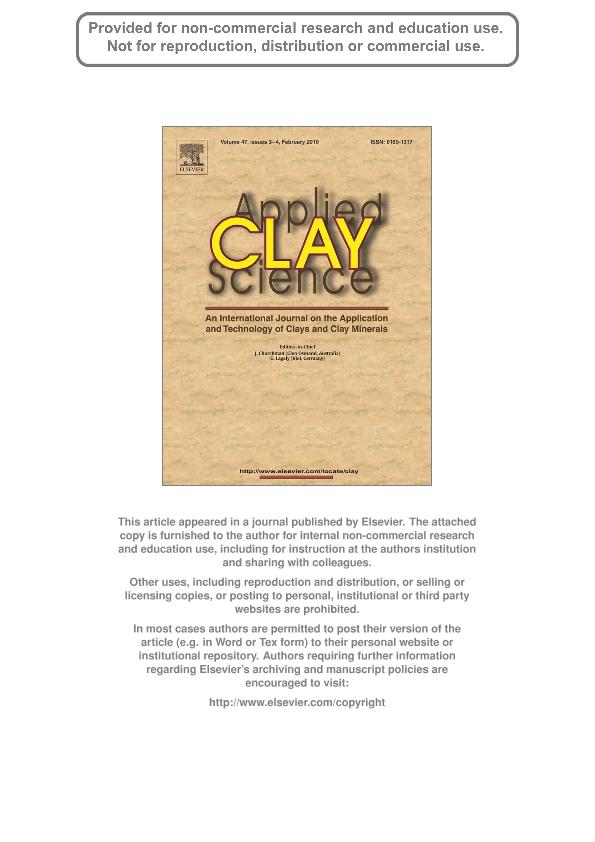Artículo
Genesis of the La Espingarda kaolin deposit in Patagonia
Fecha de publicación:
02/2010
Editorial:
Elsevier Science
Revista:
Applied Clay Science
ISSN:
0169-1317
Idioma:
Inglés
Tipo de recurso:
Artículo publicado
Clasificación temática:
Resumen
The La Espingarda kaolin deposit was formed by "in situ" alteration of sub-alkaline rhyolites belonging to the Jurassic Marifil Formation. Three altered volcanic lithofacies were identified: a porphyric biotitic ignimbrite (RPB), a coarse lithic ignimbrite (ILG), and a fluidal intrusive rhyolite (RFI). The kaolinization covers an ellipsoidal surface area of ∼ 20,000 m2, with the alteration intensity decreasing downwards and disappearing at 8-12 m from the surface. In two mine sectors small stockworks of fine quartz veins appears (< 3 m2). The deepest alteration is related to two fault zones where the three volcanic units are in contact. There is no lateral clay zoning at the faults. The mineralogical composition is kaolinite ± halloysite ± illite + quartz + feldspars + Fe-hydr(oxides). At least three kaolinite generations were identified. The first is pervasive; the second appears as a filling of vugs in the quartz veinlets that crosscut the pervasively altered rocks; and the third occurs as pure kaolin veins without quartz vein cross cuts. During the alteration processes almost total alkali cations were leached. The argillized lithofacies showed Ni enrichment and Cu, Sr, and Ba depletions. The main weathering genesis for La Espingarda is supported by the deposit morphology, its location in topographic lows, the paleoclimatic record, its simple mineralogical composition; vertical zonation, the kaolinite veins isotopes (δ18O ‰ 18.3; δD ‰ - 59.0), and the trace element distribution. A steam heated water activity produced some kaolinite overprint according to one isotopic value and the S and P contents slightly higher in the kaolinized rocks. Neither Au, Ag, As, Sb, Hg, or Ba epithermal pathfinders' anomalies nor drill data support the existence of any metallic mineralization at the kaolin blanket bottom. In Patagonia hydrothermal kaolinite manifestations are located around and beneath silicified, erosion-resistant hills and include some of the following minerals: dickite, alunite, pyrophyllite, or pyrite and have As, S, Ba, and Ag trace elements within the range of weak geochemical anomalies.
Palabras clave:
Epithermal
,
Exploration
,
Genesis
,
Kaolin
Archivos asociados
Licencia
Identificadores
Colecciones
Articulos(INGEOSUR)
Articulos de INST.GEOLOGICO DEL SUR
Articulos de INST.GEOLOGICO DEL SUR
Citación
Dominguez, Eduardo Alejandro; Iglesias, Iglesias; Dondi, Michele; Murray, Haydn; Genesis of the La Espingarda kaolin deposit in Patagonia; Elsevier Science; Applied Clay Science; 47; 3-4; 2-2010; 290-302
Compartir
Altmétricas




